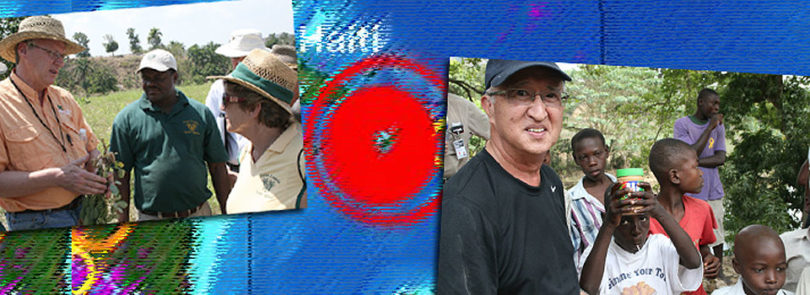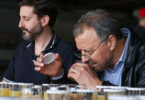In the shadow of a rundown block building in Los Palis, Haiti, children wearing tattered clothes bit into half-ripened mangoes they picked from the ground and wondered about the strange men toiling around in the field. What they didn’t quite understand was that the agricultural experts they smiled at were there to figure out ways their parents-and one day they-could produce the food needed to combat the poverty that has long crippled their Caribbean country.
In March, a team from the University of Georgia College of Agricultural and Environmental Sciences traveled to Haiti to assess how the college could help develop sustainable agricultural practices following a Jan. 12 earthquake that killed an estimated 200,000 people.
“Our college is not really set up to do relief work per se. We really can’t help in the immediate relief of the earthquake. But we do have the expertise to help the people here develop better agricultural systems that can produce better, more nutritious food without them being dependent upon food being sent to them,” said Steve Brown, CAES assistant dean for Cooperative Extension.
The trip was funded and organized by League of Hope, an Atlanta-based charity which has worked in Haiti for the past 18 months. Agricultural development is critical for the country now, said Executive Director Graham Huff, who is also a CAES communications expert.
“(The) University of Georgia has a lot of expertise in agricultural fields, but it also has many contacts in industry in Georgia and across the United States,” Huff said. “The mission (of the team members) is to see how we might employ those resources to help Haiti recover from the earthquake.”
Decades of unsound environmental practices and policy decisions-and some tough breaks from Mother Nature-have left Haiti one of the poorest, least-developed countries in the world.
Figures vary, but most Haitians live on less than $2 a day. One in five children suffers severe malnutrition, but many more don’t get the proper nourishment needed for healthy immune systems. Disease is widespread, and life expectancy is just over 50 years. Unemployment is as high as 80 percent in some areas. Haitian farmers produce only half of the food needed in the country each year.
Based on the trip, CAES plans to expand farming assistance into the central plateau, which has the potential to become a sustainable and productive agricultural area. General concepts of proper fertilization, crop varieties and rotation, conservation, disease and insect control and good post-harvest handling aren’t well understood or practiced. These are the areas where CAES experts can help the most.
“The people need a hand up instead of hand outs,” said Suchet Loois, a Haitian native and retired Tuskegee University professor who now spends time in Los Palis with the Catholic-based Haiti Humanitarian Fund.





